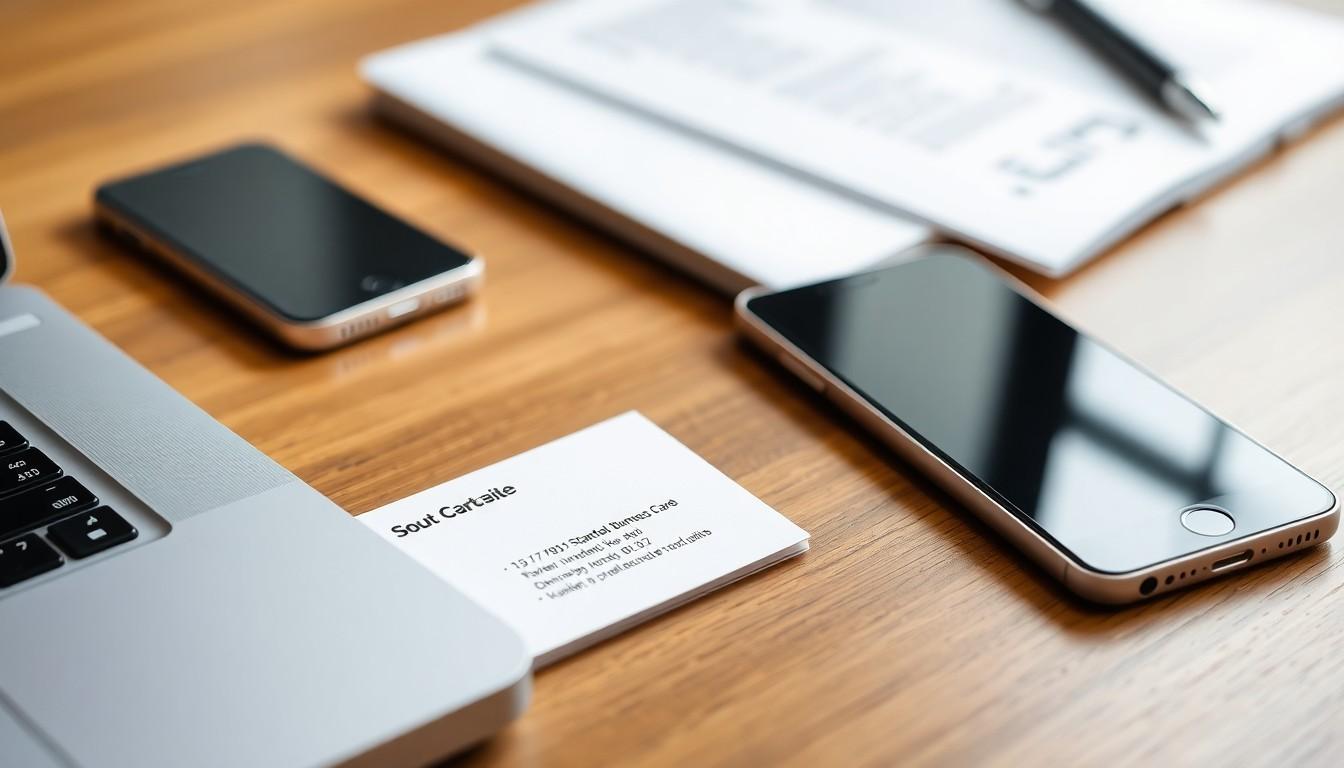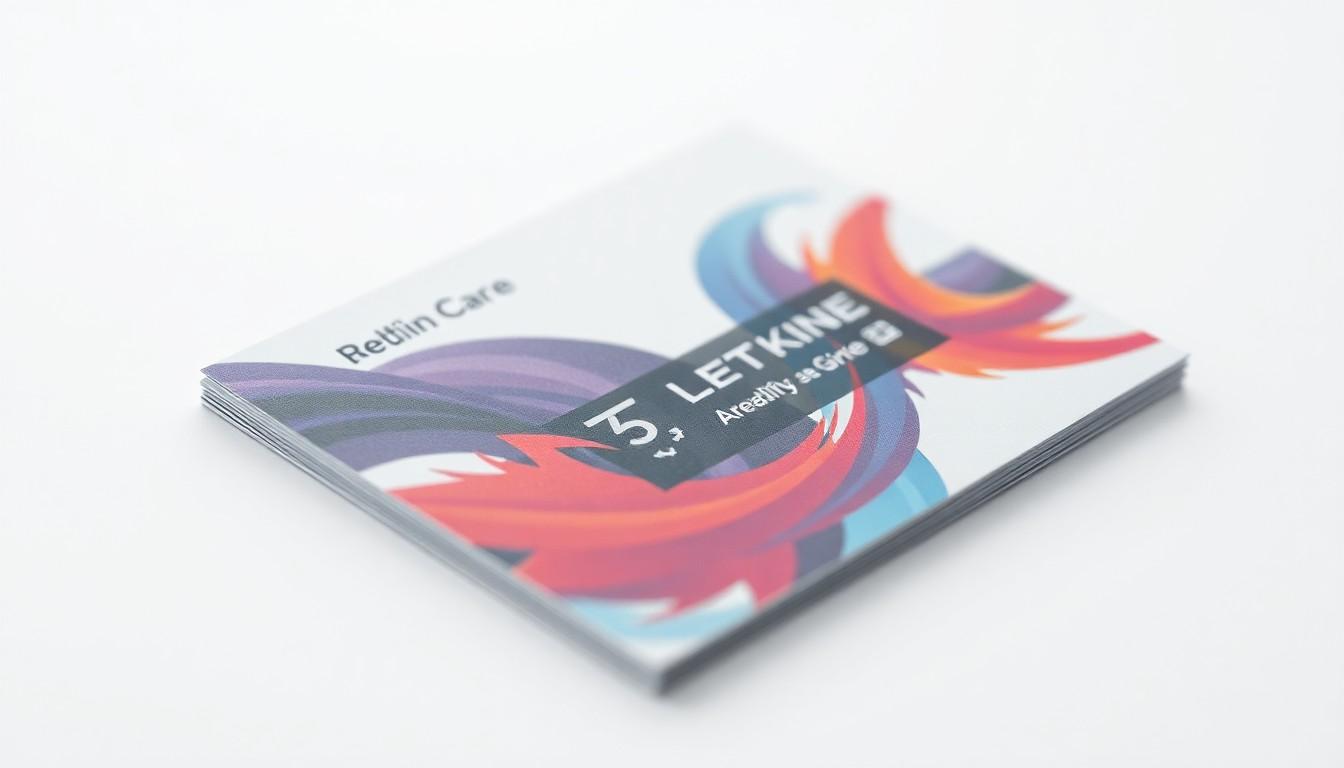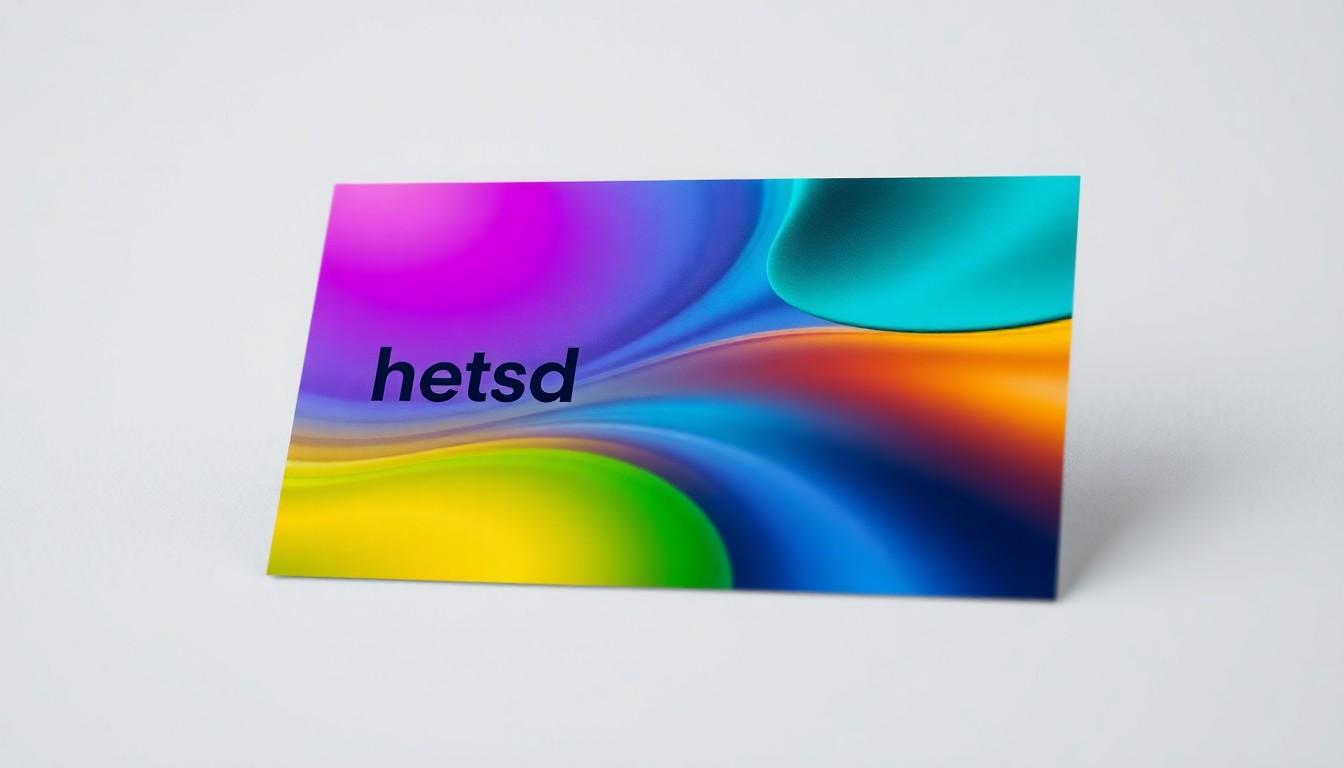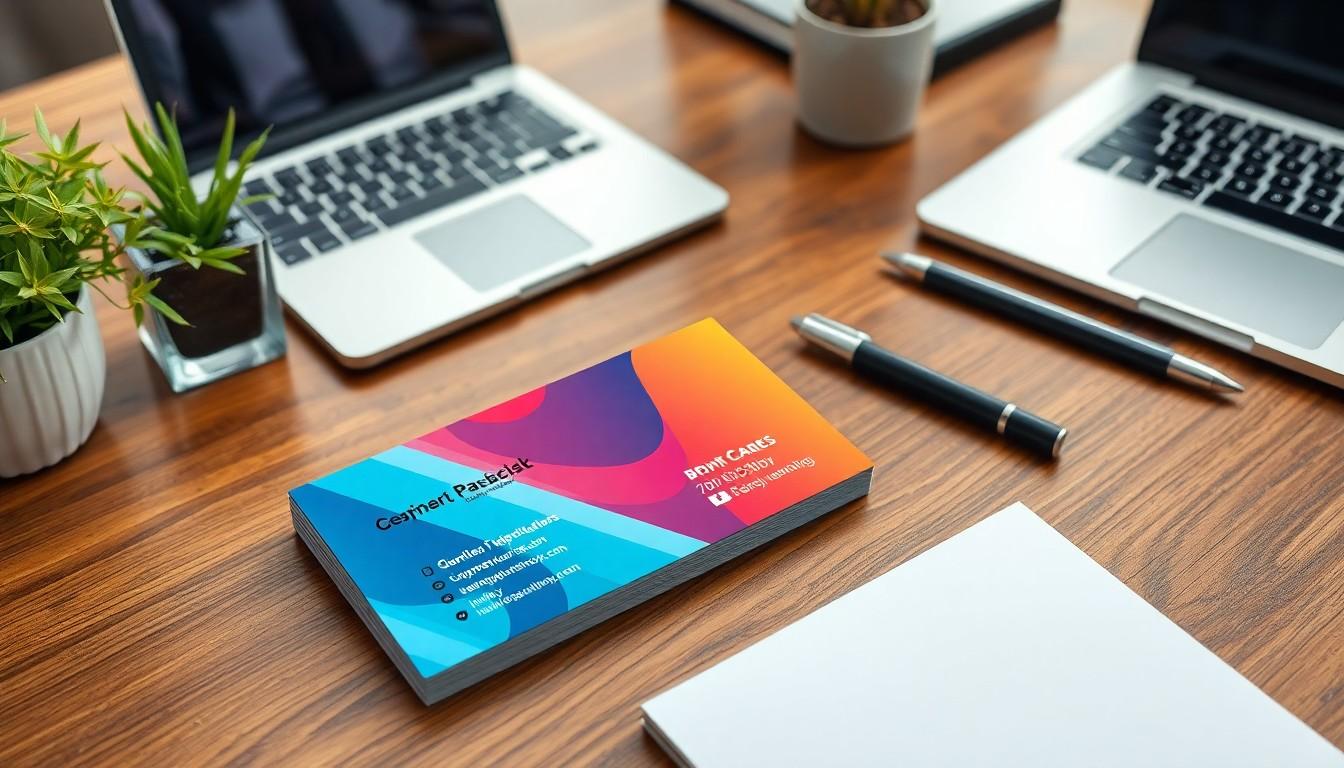TABLE OF CONTENTS
- Perfecting Your Business Card Layout
- Standard Business Card Dimensions
- Setting Up Bleed, Trim, and Safe Zones
- Choosing the Right File Format and Resolution
- Placing Text and Logos for Best Readability
- Using Margins and Spacing Effectively
- Selecting Colors and Ensuring Print Accuracy
- Front vs. Back Design Considerations
- Common Mistakes to Avoid in Layout
- Preparing for a Flawless Print
- Frequently Asked Questions
- Home
- content hub
- How to Layout Business Cards for Printing?
How to Layout Business Cards for Printing?
Matthew Prince
Content Writer
May 5, 202310455 views
May 5, 202310455 views

TABLE OF CONTENTS
- Perfecting Your Business Card Layout
- Standard Business Card Dimensions
- Setting Up Bleed, Trim, and Safe Zones
- Choosing the Right File Format and Resolution
- Placing Text and Logos for Best Readability
- Using Margins and Spacing Effectively
- Selecting Colors and Ensuring Print Accuracy
- Front vs. Back Design Considerations
- Common Mistakes to Avoid in Layout
- Preparing for a Flawless Print
- Frequently Asked Questions
A well-designed business card is more than just contact information—it's a first impression that speaks volumes about your brand. Yet, formatting a business card can feel overwhelming, especially if you're unfamiliar with the technical details that ensure a polished, professional look. From precise dimensions to proper bleed settings, every detail matters when creating a card that stands out.
Perfecting Your Business Card Layout
A professional business card layout starts with accurate dimensions. Set the size to 3.5 x 2 inches, with a 0.125-inch bleed on all sides to account for trimming. Maintaining a 0.325 x 1.75-inch safe area ensures essential information, like contact details, stays intact during printing. For images and text, use high resolution (300 DPI) and CMYK color mode for optimal print quality. These specifications guarantee sharp, vibrant cards that look professional.
Use a clear hierarchy to guide the viewer’s attention. Begin with your logo, as it's the most recognizable aspect of your brand. Follow it with your name and job title, then secondary elements like your phone number, email, and website. Clean typography helps maintain readability, while strategic placement ensures no detail goes overlooked. For additional ideas, explore free design templates available.
Review the visual flow of your design. Professionally printed cards should balance all key elements without clutter. Important text should remain at least 0.125 inches away from the edge. Avoid overly complex borders, as they may accentuate trimming discrepancies during mass production. Grammar and spelling errors can harm credibility, so request final proof reviews or free samples.
To meet professional standards, save the final card design in a print-ready format like PDF or TIFF. Include proper bleed and crop marks for accurate trimming. A vector-based PDF offers excellent scalability and compatibility for most printers. Explore business card printing options to ensure premium output tailored to your needs.
By following these guidelines, we ensure our custom-printed business cards effectively convey brand professionalism. Whether through vibrant colors or quality materials, 4OVER4.COM enhances brand identity with solutions designed to impress.
Standard Business Card Dimensions

Standard business card dimensions ensure consistency and compatibility across various uses. In the United States, the most commonly accepted size is 3.5 inches x 2 inches (89 mm x 51 mm). This size fits seamlessly into wallets, cardholders, and other organizational tools due to its similarity to credit card dimensions. Its practicality makes it ideal for professional settings where quick and convenient storage is essential. For designs with bleeds, the file setup measures 3.75 inches x 2.25 inches, accommodating an additional 0.125 inches on all sides.
Digital Pixel Dimensions for Design
For those creating digital designs, pixel dimensions are critical. At a resolution of 300 dpi, a standard business card should measure 1050 pixels x 600 pixels. This ensures clarity and high-quality printing. Various design templates can simplify the setup process, maintaining these exact dimensions to avoid complications during printing.
Alternative Sizes for Unique Formats
While the 3.5-inch x 2-inch card remains the benchmark, alternative sizes allow businesses to stand out. Examples include:
- 3.5” x 2.5” for extended layouts.
- 3.5” x 4” for folded designs providing additional space.
- Square cards, such as 2” x 2”, 2.5” x 2.5”, or even 3.5” x 3.5”, offer compact, modern aesthetics.
Selecting unique formats often depends on branding strategies and the amount of content you need to include. Businesses leveraging custom printing solutions can tailor dimensions to their needs.
Safe Areas and Bleed Guidelines
A crucial part of formatting involves setting up safe zones and bleed areas. The safe area for standard cards, roughly 3.34 inches x 1.84 inches, ensures that logos and text remain intact after cutting. Designs also benefit from a 0.125-inch bleed beyond the trim to avoid undesired white borders.
4OVER4.COM simplifies professional printing with tailored options to match your vision, adding value through flexible formats. Request free samples to evaluate materials and finishes before finalizing your decision. Our expert tools and guidance elevate every design to align with the premium standards your brand deserves.
Setting Up Bleed, Trim, and Safe Zones

Properly setting up bleed, trim, and safe zones ensures a professional look for your business cards. These three elements play a critical role in achieving clean, polished edges and maintaining the integrity of your design during the printing process.
Bleed Area
The bleed area is the portion of the design extending beyond the card's final trimmed dimensions. Its purpose is to avoid unwanted white edges by accommodating slight shifts during trimming. For a standard business card, this requires a 1/8 inch (0.125 inches) bleed on all sides, making the design dimensions 3.75 x 2.25 inches for a 3.5 x 2 inch card. Extending the background or images into this area prevents visual disruptions.
For guidance, we recommend using professional design templates to create precise bleed areas. Ensuring this setting guarantees cohesive designs regardless of production batches.
Trim Area
The trim area defines the finished size of your card following the cutting process. On standard cards, it's precisely 3.5 x 2 inches, ensuring they fit perfectly into cardholders. Any design elements meant to meet the card's edge should extend into the bleed area but must not be narrower than the trim dimensions.
Professional services such as business card printing make accurate cuts so your cards retain consistent sizing across all quantities.
Safe Zone
The safe zone is critical for placing logos, text, and important graphics without risking cuts. By setting this area inside the trim by 0.125 inches on each side, you're left with a 3.34 x 1.84 inch space to maintain the essential elements securely. This ensures alignment and readability on every card.
When designing, always place crucial information like names, contact details, and logos within the safe zone. You can request free samples for quality checks before printing to ensure elements remain unharmed during trimming.
Optimizing for Print
Create designs at 300 dpi resolution and use the CMYK color model for accurate color reproduction. Professional digital printing ensures every sheet is cut precisely, preserving your intended layout. High-quality options, like those provided by 4OVER4.COM, include custom finishes that further enhance brand identity.
Explore free business card printing options to turn your vision into reality while understanding the importance of precise formatting.
Choosing the Right File Format and Resolution

Selecting the correct file format and resolution is essential to ensure a professional-looking business card. Proper formatting and clarity in your design directly enhance brand perception, leaving a strong impression on potential clients.
File Formats
We recommend saving business card designs in either PDF or TIFF formats. These file formats are widely accepted by print services and maintain design accuracy. PDF files automatically embed fonts, reducing the risk of display issues during print production. Alternatively, saving a copy in TIFF format provides further reliability, especially for complex designs. Explore professionally designed business card templates to streamline the formatting process.
Resolution Standards
For crisp and sharp prints, designs should be created at a resolution of 300 pixels per inch (PPI). This resolution standard ensures detailed imagery and text clarity. A standard U.S. business card, sized at 3.5” x 2”, would need a pixel dimension of 1050 x 600 at 300 PPI. High-resolution designs paired with free business card printing services can make a significant difference in the final look of the card.
Ensuring Print Accuracy
Always account for the bleed area, which extends 0.125 inches beyond the card's final size, to prevent untrimmed white edges. Files submitted without proper bleed setup could lead to undesirable results. Additionally, creating the design in the CMYK color model ensures color consistency across all printed cards.

Enhancing Business Card Quality
For businesses aiming to stand out, incorporating a high-quality design process with precise resolution and file setup is key. We at 4OVER4.COM offer business card printing services designed to meet these standards. Whether incorporating premium finishes or special features, such as spot UV or foil stamping, our printing solutions elevate brand identity.
Why 4OVER4.COM Stands Out
Partnering with 4OVER4.COM provides access to custom options that enhance your design. From design templates to tailored print samples, our platform ensures professional results. Request free business card samples to review quality before bulk printing, giving businesses confidence in their design choice. High-quality production and attention to detail make 4OVER4.COM a trusted solution for creating a lasting first impression.
Placing Text and Logos for Best Readability
Ensuring that text and logos are placed effectively on a business card enhances readability and strengthens brand representation. Proper placement creates balance and ensures critical information is easily accessible at a glance.
Strategic Logo Placement
Logos are essential for establishing brand identity. Popular placement options include:
- Top Left Corner: Ideal for guiding the reader's eye naturally, as people typically start reading from the top left.
- Top Right Corner: Creates a balanced design when contact information occupies the left side.
- Center: Maximizes visibility but may limit space for additional elements. A clean, uncluttered layout is necessary for this option.
- Bottom Corners: Adds uniqueness and stability to the card's design. This works well when paired with text-heavy upper sections.
Using high-resolution logos enhances quality. With premium custom printing solutions from 4OVER4.COM, designs maintain precision even in intricate layouts.
Formatting Text for Clarity
Readable text ensures that clients can quickly access contact information. Key considerations include:
- Font Selection: Use clear, legible fonts. Avoid more than two font styles on a single card to maintain consistency.
- Font Size: A comfortable minimum size for readability is 8 pt for contact details, with larger fonts for names and titles.
- Spacing: Balanced spacing between text elements avoids a cluttered appearance.
- Color Contrast: Text color should contrast the background for clarity. For instance, dark text over lighter backgrounds improves visibility.
Optimizing Image Use
High-quality images add character to business cards when relevant. Place images thoughtfully, ensuring they don’t hinder the readability of text or overshadow the logo. If adding multiple images, place them side by side, as commonly seen on the back of cards. Ensure the images align with the overall brand theme for consistency. Experimenting with custom layouts is easier when ordering free samples, helping you ensure the best design decisions.
Leveraging White Space
Generous white spaces improve readability by preventing overcrowded designs. This minimalist approach highlights key elements, like logos and contact details, ensuring they stand out. It also creates a clean, professional look, aiding the viewer's focus on important details.
Enhance your card's effectiveness with professional business card printing services. By incorporating clean layouts, visually pleasing logo placements, and precise text formatting, business cards become memorable tools for networking and brand visibility.
Using Margins and Spacing Effectively
Margins and spacing create balance and ensure your business card looks professional. Proper alignment helps guide the viewer's eye, keeping the layout clean and easy to read.
Importance of Margins
Setting consistent margins defines the boundaries of the design. For standard 3.5 x 2-inch cards, a 1/8 inch (0.125 inches) margin around the edge is optimal. This margin, often referred to as the "safe zone," ensures that critical information like text and logos stays intact during trimming. Keeping essential elements within a 3.25 x 1.75-inch area eliminates cutting risks.
Strategic Use of Spacing
Spacing between design components enhances readability and improves visual flow. White space, or the blank area around elements, prevents the layout from looking cluttered. Avoid cramming too much information by focusing on the essentials, like your name, title, contact details, and logo. Browse business card templates to see effective spacing examples.
Enhanced Results Through Custom Printing
Custom printing solutions amplify your design's impact by incorporating professional adjustments like precise margins and spacing. 4OVER4.COM offers tailored options to create standout, well-aligned designs. Their services include free sample cards for evaluating layout execution, spacing, and print quality before bulk orders.
Image Placement for Balance
High-resolution images complement text while maintaining balance. For example, use your company logo prominently while spacing it effectively from text elements. 4OVER4.COM ensures image clarity and alignment to elevate your brand identity, offering free business cards to help businesses showcase their designs confidently.
A well-formatted business card reflects professionalism and attention to detail. With precise margins and careful spacing, brands communicate their message effectively during networking. Access expert business card printing solutions for flawless results.
Selecting Colors and Ensuring Print Accuracy
Color Selection for Effective Branding
Selecting appropriate colors enhances a business card's visual appeal and reflects a brand's identity. Blue conveys trust, often chosen by law, finance, and healthcare industries. Yellow communicates optimism and works well for nonprofits, gyms, and child-focused products. Black embodies elegance and professionalism, commonly used by tech companies, fashion brands, and CEOs. Green connects to nature, ideal for organic brands, wellness industries, and medical professionals. These targeted choices ensure the card resonates with its intended audience.
Contrasting, triadic, complementary, or analogous combinations improve aesthetics. For example, black and gold pair well for luxury brands, while green and white emphasize eco-friendly values. Testing various color schemes helps achieve the desired impression. Explore design templates that cater to diverse brand identities.
Setting Colors for Print Accuracy
Business cards use the CMYK color model for precise color reproduction during printing. Adjust designs created in RGB mode to match the print-ready CMYK scheme. For instance, convert vivid RGB colors to CMYK equivalents to prevent discrepancies. A standard rich black mix of 50% Cyan, 40% Magenta, 40% Yellow, and 100% Black ensures a deep, high-quality black print. For a cooler tone, combine 100% Cyan with 50% Black; for warmth, add 100% Magenta instead.
Include a bleed area of 0.125 inches on all edges to prevent unwanted white borders after trimming. Ensure that all vital text and graphics remain within the safe zone to maintain their integrity during cutting.
Optimizing File Formats and Resolution
Save designs in PDF or TIFF formats for high-resolution printing. Business cards require a resolution of 300 PPI with dimensions adhering to standard U.S. sizes of 3.5 x 2 inches and larger custom sizes like 3.5 x 2.5 inches. High-resolution settings ensure sharp text, logos, and images.
Upload files tailored for business card printing to achieve professional results. Proper file preparation guarantees your business card's design integrity during production.
Benefits of Custom Printing Solutions
High-quality printing services, like those at 4OVER4.COM, elevate your business card design to leave a lasting impression. Their custom solutions provide precise color reproduction, superior finish options, and diverse material choices to align with your branding. Take advantage of free business cards offers to experiment with styles and premium features.
Requesting free samples ensures confidence in color accuracy, design execution, and material quality before large-scale printing. This essential step mitigates errors while highlighting brand excellence.
Front vs. Back Design Considerations
Front Design Elements
The front of a business card is typically the focal point, holding the most vital details. Key elements include the logo, business name, and possibly a tagline. These components should dominate the layout. A clear hierarchy helps viewers grasp your business's identity instantly. Incorporating white space ensures a balanced, professional appearance.
High-quality printing enhances these front-facing details. Services like custom printing solutions from 4OVER4.COM bring vibrancy to colors and sharpness to text. Experiment with finishes such as matte, gloss, or spot UV to align with your brand image.
Back Design Enhancements
The back of the card provides an opportunity to expand functionality or deepen engagement. It can contain your contact information, website link, QR code, or a call-to-action. Businesses often add social media handles here to maximize connectivity.
Using custom artwork or complementary colors can make the back visually appealing without overshadowing the front. High-resolution images or patterns can fill gaps but avoid overwhelming the design.
Access to free samples ensures confidence in layout execution—check for free samples provided by 4OVER4.COM to perfect back design details.
Balancing Front and Back
Maintain consistency between both sides while avoiding redundancy. Fonts, colors, and spacing should match your brand guidelines from front to back. The back can reinforce the information presented on the front without repeating it verbatim. For instance, if the logo dominates the front, the back can creatively emphasize contact methods.
4OVER4.COM offers tailored business card templates to ensure cohesive designs. Explore our design templates to harmonize front and back layouts.
Custom sizes or unique materials, like premium stocks, amplify the dual-sided effect. For initial runs, check out free business cards to refine your design approach without risks.
Common Mistakes to Avoid in Layout
Overcrowding Information
Too much text or design elements on a business card reduces its readability and impact. Essential details like your name, job title, business name, phone number, email, and website are sufficient. Avoid cramming multiple addresses or irrelevant information. Simplified layouts increase clarity and direct attention to key elements.
Inconsistent Font Choices
Poor font selection disrupts the professional look of a card. It's necessary to use fonts that align with the brand's aesthetic and are easily readable, even at smaller sizes. All text should maintain a minimum size of 8pt; critical information, like your name or business name, should appear in a larger or bold font for emphasis. Stick to a maximum of two complementary fonts for consistency.
Neglecting White Space
White space around content improves the visual hierarchy and prevents designs from appearing cramped. This strategic use of space emphasizes essential details, ensuring better readability while creating a polished look. Overlapping too many elements diminishes the professional tone and overwhelms the viewer.
Overlooking Premium Print Solutions
Unprofessional printing diminishes the quality of even the best designs. High-resolution, print-ready files and superior materials are crucial. Custom options like matte, glossy, or velvet lamination elevate the overall appeal. At 4OVER4.COM, our advanced printing techniques and free samples ensure the highest standards for brand representation. Order free samples before finalizing your print run.
Ignoring File Setup Essentials
Improper file setup causes issues like misaligned trims or unintended blank edges. All designs should include a 0.125-inch bleed and a 0.125-inch safe zone to account for cutting tolerances. Files saved in CMYK mode with 300 dpi resolution deliver accurate colors and crisp prints. These adjustments ensure your cards print exactly as intended.
4OVER4.COM provides tailored solutions for standout business cards, from design support to premium finishes. Rely on us to strengthen your brand presence through exceptional print quality and attention to detail. Get free business cards today.
Preparing for a Flawless Print
Creating a well-formatted business card is about more than just design—it’s about ensuring every detail aligns with your brand’s professionalism. By focusing on proper dimensions, clear hierarchy, and high-quality file setups, we can elevate a simple card into a powerful branding tool.
Attention to elements like bleed settings, color accuracy, and strategic layouts ensures your card stands out while maintaining functionality. Partnering with trusted printing services and requesting free samples gives us the confidence to achieve flawless results.
A thoughtfully crafted business card leaves a lasting impression, and with the right approach, it becomes a seamless extension of our brand identity.
Frequently Asked Questions
What are the standard dimensions for a business card?
The standard size for a business card in the U.S. is 3.5 inches x 2 inches. This size fits conveniently in wallets and cardholders. Additionally, remember to incorporate a 0.125-inch bleed for proper trimming.
Why is a bleed area important in business card design?
A bleed area ensures that no unwanted white edges appear after trimming. Extending design elements at least 0.125 inches beyond the card's trim size helps achieve a professional finish.
How can I ensure my business card text remains readable?
Use clean, professional typography with clear hierarchy. Choose legible font sizes and maintain proper contrast between text and background. Avoid clutter and use white space to enhance readability.
What file format should I use for business cards?
PDF and TIFF are the best formats for business card printing. These formats preserve design quality and ensure accurate reproduction during the printing process.
What resolution is optimal for business card printing?
Design your business cards at 300 DPI (dots per inch). This resolution ensures sharp and crisp prints, preventing pixelation.
How can I make my business card more visually appealing?
Implement a clear layout with balanced spacing and white space. Use high-resolution images, strategic logo placement, and consistent fonts. Incorporate colors and finishes that align with your brand identity.
What color mode is best for business card printing?
Always design in the CMYK color mode for accurate color reproduction in print. Avoid using RGB, as this mode is optimized for screens, not printing.
How can I format text and logo placement on a business card?
Place your logo prominently, such as in the top left or center. Ensure text like your name and contact information follows a natural hierarchy. Keep essential details within the safe area of 3.34 x 1.84 inches.
What are some common mistakes to avoid when designing a business card?
Avoid overcrowding information, inconsistent font choices, neglecting bleed and trim areas, and using low-resolution images. Always proofread your design to catch errors before printing.
Are custom business card designs worth it?
Yes, custom designs enhance brand identity and make a lasting impression. Tailored options like premium printing, custom sizes, and finishes offer unique solutions to elevate your design.
More from How To's
10318
Whether you're an established business magnate or an emerging entrepreneur on the rise, one thing remains undeniable:
Emma Davis
Feb 19, 2024
3608
Embossed cards are tactile to the touch and visually appealing. This property helps to create a lasting impression on your audience and sets y
Matthew Prince
May 19, 2023
12763
A well-designed business card is more than just a piece of paper—it’s a powerful tool that leaves a lasting impression. In a world where f
Matthew Prince
Feb 10, 2023
1853598
In a world where standing out is key, custom stickers offer a vibrant way to express individuality and make a lasting impression. Whether you&
Emma Davis
Mar 16, 2021
2534559
In a world where personal expression and branding are key, sticker maker machines have become indispensable tools for creativity and marketing
Emma Davis
Mar 16, 2021
2604582
Finding the perfect solution for custom labels, stickers, or creative projects can feel like a never-ending search. We want something that&rsq
Emma Davis
Feb 23, 2021
2414131
Large poster printing can be a great way to make a statement or advertise your business. Whether you need
Emma Davis
Feb 9, 2021
2663978
When it comes to innovative drinkware, 3D lenticular cups are truly a sight to behold. These cups feature ca
Emma Davis
Dec 4, 2020









